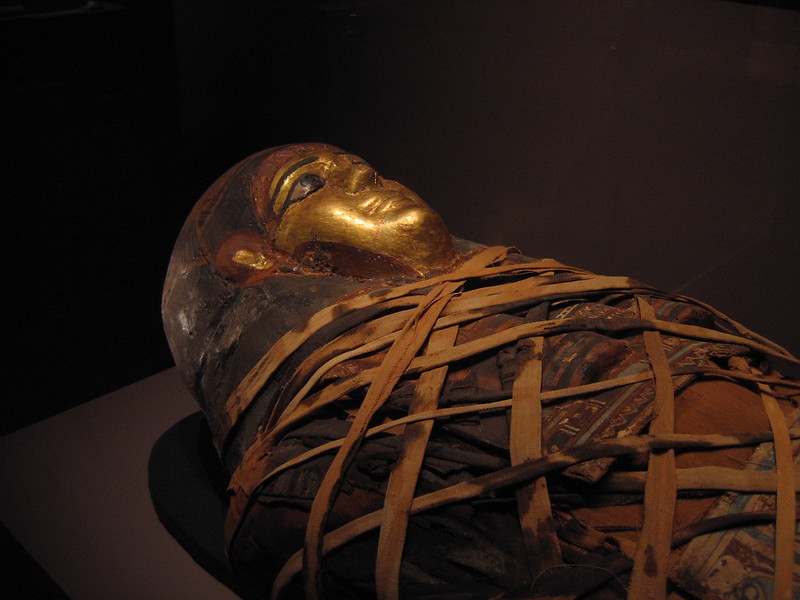Today in 1923, archeologists opened and entered the tomb of Egyptian pharaoh Tutankhamun.
It had been virtually untouched since being built, which was unusual since grave robbers had cleaned out most of the tombs beforehand.
Perhaps being studied and paraded about in museums isn’t the afterlife King Tut wanted, but it could have been worse.
Other mummies were turned into paint!
The color was called Mummy Brown, and it didn’t get the name just because it had the same shade as those ancient remains.
They made the pigment by combining white pitch and myrrh with the ground-up bits of mummies, both humans and cats.
The rich brown colors were prized by at least some parts of the artistic community starting in the 16th century and lasting through the early 1900s.
The attitude about this grisly process can be summed up by an ad which read “Surely a 2,000-year-old mummy of an Egyptian monarch may be used for adorning a noble fresco… without giving offence to the ghost of the departed gentlemen or his descendants.”
This paint fell out of favor for several reasons.
One was that, as Egyptology became a bigger and bigger deal, the supply of mummies fell and the price rose.
It was no longer cost effective to make the paint.
Also, a lot of people didn’t really want Mummy Brown when they learned the name wasn’t just a description but an ingredient list.
One of the artists who had purchased a tube was Edward Burne-Jones.
The story goes that when he realized what was in that tube of paint, he buried it in his backyard.
Among the items found in King Tut’s tomb: two trumpets, one made of silver, another of bronze or copper.
Seventeen years later a musician played one of the trumpets for a radio broadcast.
A musicologist called the sound “ear-splitting discord.”
The trumpeter tried again, and this time made more pleasant notes, but the horn broke.
They repaired it, played it just once more for another broadcast, and then left it alone to rest.
Mummy Brown (Florida State University Department of Art History)
A Pigment from the Depths (Harvard Art Museums)
Tutankhamun’s ‘cursed’ trumpet that stirs ‘deadly conflict’ has arrived in London (ClassicFM)
Our Patreon backers will be hailed as heroes for centuries and centuries

